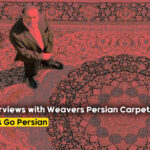
Interviews with Prominent Weavers and Artists of Persian Carpets
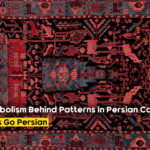
The Symbolism Behind Patterns in Persian Carpets
Persian carpets have long been celebrated for their timeless beauty, intricate patterns, and deep cultural significance. Traditionally, these carpets feature classic motifs such as medallions, floral patterns, and geometric designs passed down through generations. However, in recent years, a new wave of contemporary Persian carpets has emerged, blending modern aesthetics with traditional craftsmanship. These carpets offer a fresh take on an ancient art form, appealing to a younger and more diverse audience while staying true to the techniques that have made Persian carpets famous. In this blog post, we explore how modern designs are reshaping contemporary Persian carpets and how they are being received in today’s global market.
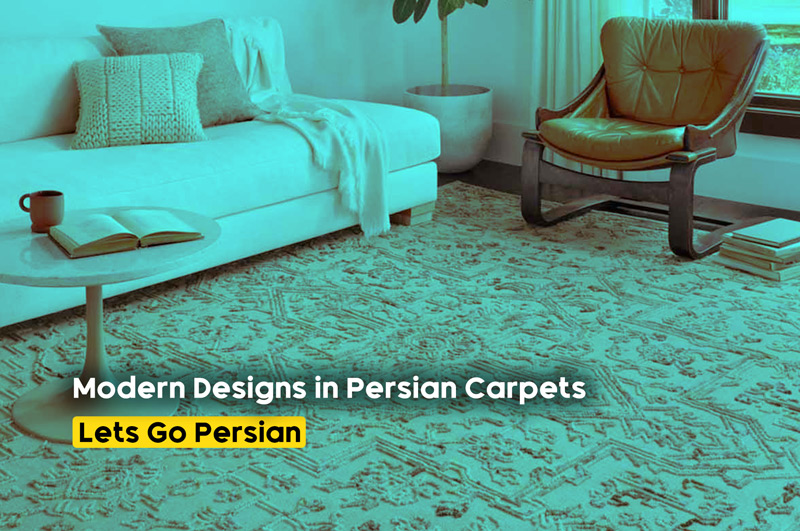
Exploring Modern Designs in Contemporary Persian Carpets
1. The Fusion of Traditional and Modern Aesthetics
Respecting Tradition While Embracing Change
Contemporary Persian carpets often combine traditional techniques with modern designs, resulting in pieces that reflect both heritage and innovation. While the method of weaving—hand-knotting on a loom—remains unchanged, the patterns and colors have evolved to suit modern tastes and interior styles.
- Traditional Techniques: The time-honored craftsmanship of Persian carpet weaving, including hand-knotting and the use of natural materials such as wool and silk, remains central to the creation of these carpets.
- Innovative Designs: Modern Persian carpets often feature minimalist patterns, abstract motifs, and bold geometric shapes, providing a contrast to the intricate floral designs of classical carpets. These designs appeal to contemporary sensibilities and are often more versatile in modern interior spaces.
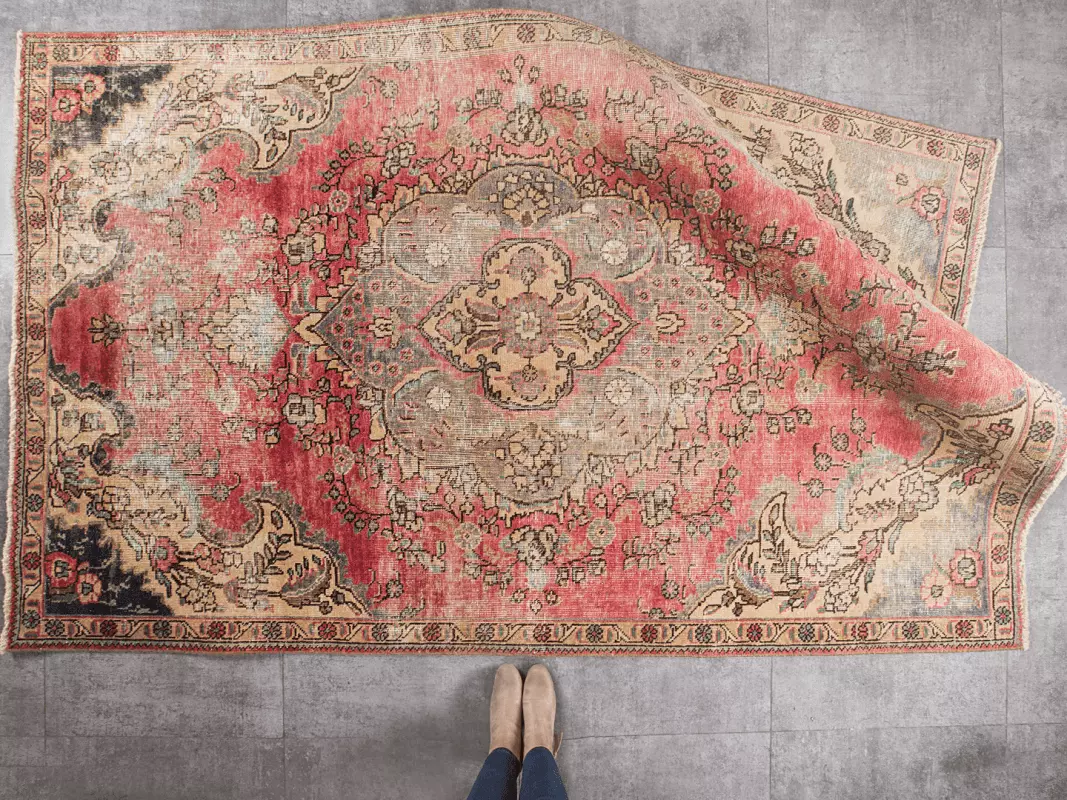
Traditional Techniques Persian Carpet
Case Study: Mahin Tabrizi’s Modern Interpretations
One of the most influential artists in contemporary Persian carpet design is Mahin Tabrizi, known for her bold, abstract interpretations of traditional motifs. Her work combines the precision of Persian weaving with modern art influences, such as minimalism and abstract expressionism.
- Use of Color: Tabrizi’s carpets often employ monochromatic schemes or stark contrasts, using color as a primary means of expression rather than relying solely on intricate patterns.
- Simplified Patterns: Instead of the complex curvilinear designs found in traditional Persian carpets, Tabrizi’s work features simplified forms that echo modern architectural lines and natural elements.
2. Minimalism and Simplicity: A New Approach to Persian Carpets
Less Is More
Minimalism has become a popular design trend in contemporary carpets, reflecting a shift in modern interior design toward clean lines, open spaces, and simplicity. Persian carpets, known for their elaborate patterns, are being reimagined to fit minimalist environments without sacrificing their artistry.
- Muted Color Palettes: Contemporary designs often incorporate neutral tones like beige, gray, black, and white. These carpets may feature a subtle design, allowing the texture and material to take center stage rather than a complex pattern.
- Textured Over Patterned: In some modern Persian carpets, the emphasis shifts from intricate designs to the texture of the weave itself, creating visual interest through the material rather than through detailed patterns. These carpets can seamlessly blend into minimalist interiors while adding a sense of warmth and sophistication.
Example: Monochromatic Carpets from Nain
Weavers in Nain, a city famous for its fine wool and silk carpets, have embraced minimalism by producing carpets that feature monochromatic patterns. These carpets rely on texture and varying shades of a single color to create depth, catering to modern homes with minimalist decor.
- Subtle Designs: Nain’s modern designs often have a barely-there medallion or pattern that only reveals itself when viewed closely. This subtle approach allows the carpets to fit into minimalist spaces without overwhelming the room.
3. Abstract and Geometric Designs in Modern Carpets
Breaking Away from Symmetry
While traditional Persian carpets are known for their balance and symmetry, many contemporary designs are embracing asymmetry and abstract patterns. These carpets often feature bold, fragmented designs that create a dynamic and modern look, aligning with contemporary art movements.
- Abstract Art Influence: Inspired by modern art movements such as abstract expressionism and cubism, contemporary Persian carpets may feature irregular shapes, splashes of color, or geometric forms that break away from the uniformity of traditional patterns.
- Geometric Motifs: Carpets with geometric designs—such as hexagons, diamonds, and triangles—are becoming increasingly popular. These carpets still draw from traditional tribal designs but reinterpret them with a more modern and graphic aesthetic.
Example: Geometric Carpets from Qashqai Tribes
The Qashqai nomadic tribes have a long history of producing tribal carpets with geometric designs, but in contemporary versions, the shapes are often exaggerated or simplified to give them a more modern, graphic look.
- Bold Shapes and Colors: Qashqai carpets now feature large, bold geometric shapes in striking colors like red, navy blue, and mustard yellow, appealing to modern art lovers and contemporary home designs.
4. Experimentation with Color and Materials
The Bold Use of Color
While traditional Persian carpets often rely on natural dyes to produce rich reds, blues, and earth tones, contemporary designers are pushing the boundaries with more vibrant, unconventional colors. Bright pinks, purples, neon greens, and even metallic hues are being introduced to cater to modern tastes.
- Bright and Unexpected Palettes: Contemporary Persian carpets may feature unexpected color combinations, such as neon green paired with deep blues or vibrant purples alongside softer pastel tones. These colors make a bold statement and can serve as a focal point in modern interiors.
- Monochrome and Pastels: Some modern carpets opt for softer, pastel colors or monochrome schemes that create a sense of tranquility and simplicity, perfect for serene, minimalist settings.
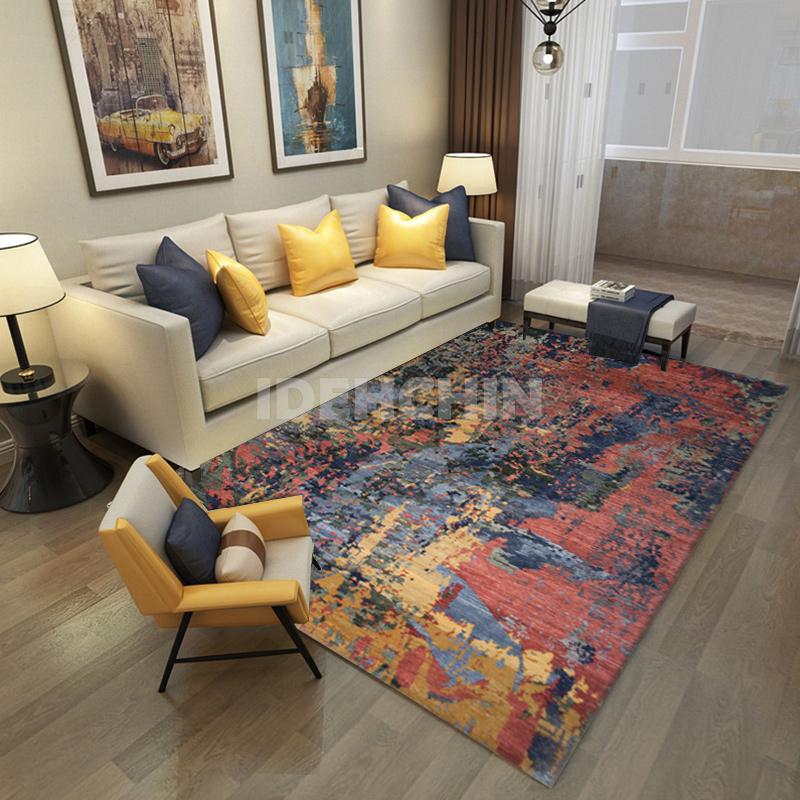
Monochrome and Pastels
Exploring New Materials
While wool and silk remain staples in Persian carpet weaving, some modern designers are experimenting with alternative materials, such as bamboo silk, jute, and even recycled fibers. These materials offer new textures and environmental benefits, appealing to eco-conscious buyers.
- Eco-Friendly Carpets: Designers like Parviz Jalali from Qom have been experimenting with sustainable materials like organic wool and plant-based dyes. Jalali’s carpets reflect the modern consumer’s increasing demand for environmentally friendly products while maintaining the craftsmanship of traditional Persian weaving.
- Blended Materials: In some contemporary carpets, different materials are blended to create mixed textures and layered visual effects. For example, silk might be combined with bamboo fiber to produce a subtle sheen, creating a more dynamic look and feel.
5. The Role of Contemporary Persian Carpets in Modern Interiors
A Perfect Fit for Contemporary Homes
One of the reasons modern Persian carpets have gained popularity is their ability to fit seamlessly into a wide range of interior design styles. Whether in a minimalist, industrial, or eclectic setting, contemporary Persian carpets can serve as both a focal point and a complementary piece.
- Versatility in Design: Modern Persian carpets are versatile enough to be used in a variety of spaces, from living rooms to home offices. Their simplified designs and neutral colors allow them to enhance the overall look of a room without overpowering it.
- Combining Old and New: Many homeowners and interior designers love the idea of blending old-world craftsmanship with contemporary design. A modern Persian carpet in a minimalist space can create a sense of balance, adding warmth and texture while still maintaining a sleek and modern aesthetic.
Example: Contemporary Persian Carpets in Open-Plan Homes
With the rise of open-plan living, contemporary Persian carpets are becoming a popular choice for defining spaces within large, open rooms. For example, a bold, geometric Persian carpet can help visually separate a living area from a dining space, while still maintaining an overall sense of flow.
- Defining Spaces with Carpets: In open-plan homes, contemporary Persian carpets often serve a dual purpose: they define distinct areas and provide a central design element that ties the room together.
6. The Global Appeal of Contemporary Persian Carpets
A New Generation of Collectors
The shift toward modern designs in Persian carpets has attracted a new generation of collectors and buyers, many of whom seek carpets that combine traditional craftsmanship with a contemporary aesthetic. Younger collectors are drawn to pieces that fit into modern living spaces while also representing a piece of Persian heritage.
- Cultural Fusion: The fusion of traditional Persian craftsmanship with modern design makes these carpets popular with buyers around the world. The international appeal of contemporary Persian carpets has led to their inclusion in prestigious galleries and auctions, further boosting their global presence.
Custom Designs and Personalized Carpets
In the world of contemporary Persian carpets, many weavers and designers are offering custom designs that allow buyers to personalize their carpets. This trend reflects the modern consumer’s desire for unique, one-of-a-kind pieces that reflect their style and preferences.
- Bespoke Carpets: Weavers such as Ali Rezaei from Tabriz are working with clients to create bespoke carpets, where buyers can choose the colors, patterns, and materials that best suit their needs. This customization adds another layer of exclusivity to contemporary Persian carpets.
Conclusion
The world of contemporary Persian carpets is a fascinating blend of traditional craftsmanship and modern design innovation. As weavers and designers experiment with new patterns, materials, and colors, they are not only keeping this ancient art form alive but also making it relevant for today’s global audience. Whether through minimalism, abstract designs, or bold color choices, modern Persian carpets continue to captivate and inspire, offering a new way to appreciate the rich heritage of Persian weaving.



















